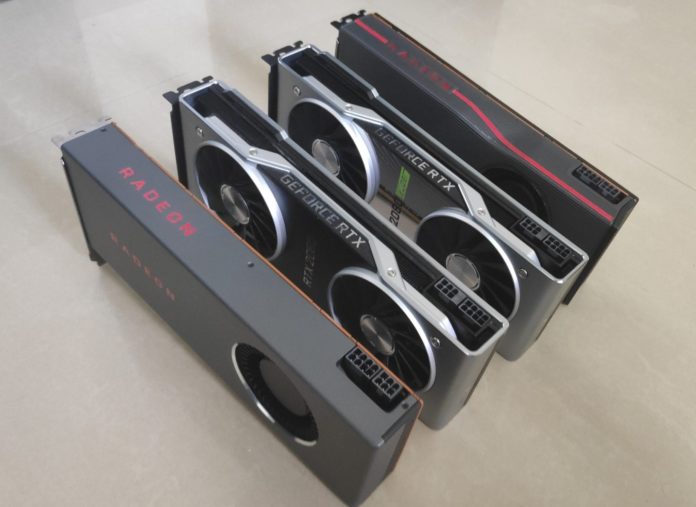Roughly a week ago, AMD published a blog post where they detailed about the enhanced thermal monitoring that they had introduced in the Radeon VII and subsequently carried over to Navi based Radeon RX 5700 series. Previously, much like Nvidia, the sensors on Radeon GPUs would only report the Edge temperature. This data, although helpful, was much lower than the actual temperatures in the hottest portions of the core. Now, thermal tracking has been enhanced with the introduction of several Hotspot sensors on-die which record the temperatures of hotter areas on the chip. The highest reading among these is reported by thermal tracking tools as the Junction temperature. According to AMD, 110C is the highest safe temperature that the 5700 series can be run at.

OPERATING AT UP TO 110C JUNCTION TEMPERATURE DURING TYPICAL GAMING USAGE IS EXPECTED AND WITHIN SPEC.
Mithun Chandrasekhar
We do, however, take issue with the sentence immediately before:
the RadeonTM RX 5700 series GPUs will continue to opportunistically and aggressively ramp clocks until any one of the many available sensors hits the ‘hotspot’ or ‘Junction’ temperature of 110 degrees Celsius.
Mithun Chandrasekhar
We reported on this earlier but now stand corrected as the given scenario that AMD describes is practically impossible. If indeed the core clock speeds of the Radeon 5700 XT GPUs could keep boosting till the Junction temp reached 110C, then we would have had a lot of AIB custom 5700 models reach much higher speeds than they currently do.
Furthermore, the reference cards and the board partner models would perform almost identically, pretty much making the latter a moot point. Furthermore, this sentence by AMD seems to indicate that better cooling (or custom cards with all those gorgeous heatsinks) is redundant and irrelevant. Which is straight-up incorrect. The Radeon RX 5700 XT GPUs won’t boost all the way up to 110C and will start throttling at much lower temperatures as otherwise the chips would most likely melt or cause a hard crash.
Using better cooling, you can not only get improved stock performance but also enhanced overclocking capability which is not practical with the blower-style design. We find it frustrating that AMD still hasn’t ditched it as NVIDIA revamped their Founders Edition heatsink a year ago, replacing it with a dual-fan design making it competitive with the entry
Read more:



This article is naive about GPU boosting and you should research more before writing like this. AMD’s statement assumed the reader is familiar with typical GPU boost operation, which means that all 3 of power, temperature and voltage curve are taken into account to determine the operating conditions.
What they said amounts to the more accurate junction temperature network being used to replace the legacy thermal sensor placed in close proximity to the die for the temperature based limiting. It will aggressively continue boosting up to TJmax if neither the power limit nor the voltage curve has reached the maximum allowed value.
It also has no implication like the one you made about aftermarket coolers being unnecessary. How did you even come to that conclusion? Better coolers will transfer heat away from the die more effectively, meaning that it’s less likely to hit TJmax until the current draw and core voltage are also higher, resulting in faster operating speeds under more conditions.
Very disappointing article.
As per usual, the people writing these articles are about as educated as the toddler they were taught by! Useless garbled mess with little to no knowledge or understanding of how certain devices even operate…
Sad to see someone ACTUALLY gets paid to write this type of crap..